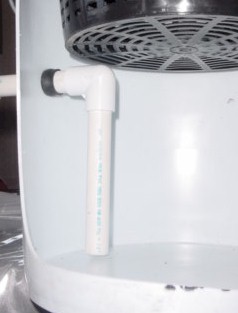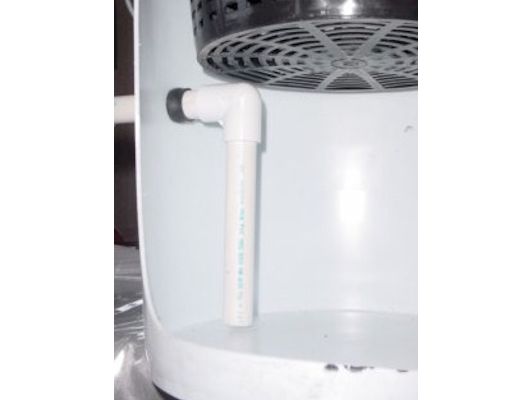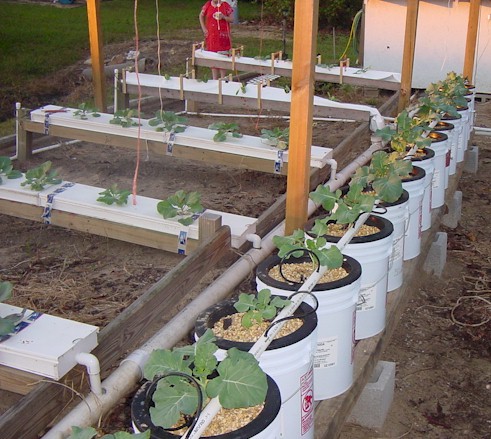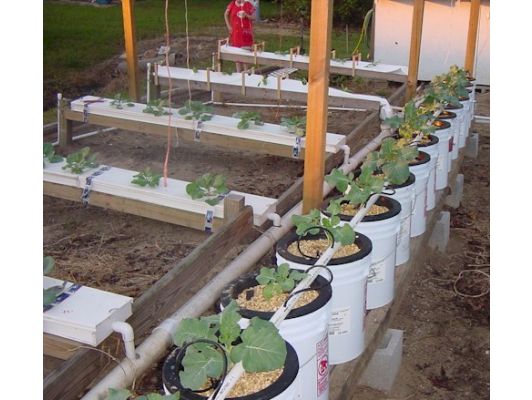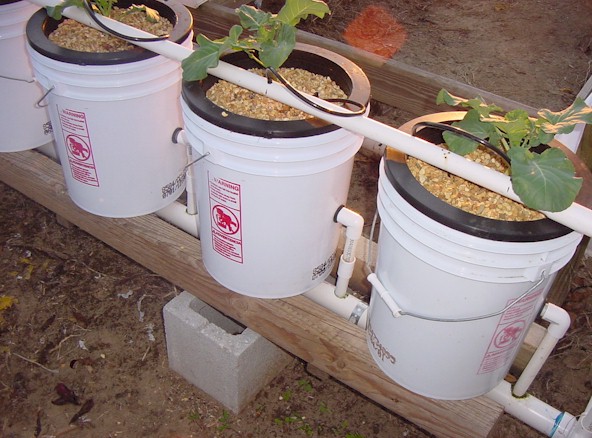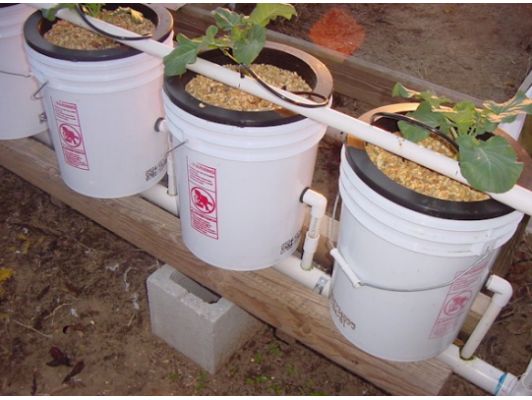Dutch Hydro Pots
Like many hydroponic systems, Dutch Pots, aka Bato Buckets, are fed a nutrient solution from a reservoir via a pump-driven series of emitters. After dripping down throught the growing medium, the solution is recycled back to the reservoir via a drain system. Part of the recirculating solution, however, is held in the buckets below the net pots, and roots grow down into it.
These originally appeared on a now-defunct hydroponics website, and show how the hydro gardener assembled Dutch Pot-style hydro containers from 5-gallon buckets, 1/2" PVC pipe, and 10" net pots.
The grommet used is a 3/4" "top hat", the drilled hole for it is 7/8" (rather than 13/16), allowing 1/2" PVC pipe to pass thru and seal snugly.
The grommet shown is not the standard doughnut shape, but rather a T shape, with the insertion of the pipe expanding the inner side of the grommet to effect the seal. Since the connection is not under any pressure, almost any appropriately sized, reasonably snug-fitting grommet should work just fine.
The drilled hole should be positioned so that it will be about 1" below the bottom of the installed net pot. Chamfering the end of the PVC pipe and lubricating it with soapy water facilitated inserting the pipe through the grommet.
The inside end of the drain pipe should be cut at an angle to help prevent clogging by plant roots.
Note that the photos showing the buckets installed appear to have some of their drains cut and spliced to lengthen them, likely because the grade of the main drainpipe was not considered. Cutting these pieces to length after the intial set up probably would have been the better way to go.
The grow medium appears to be pea gravel, with nutrients fed via drip emitters from a main supply line. Expanded clay media should also work well.
Note that it's a good idea, no matter where you place the emitters, that their connection to the supply line be over the bucket as well, in case of leaks.

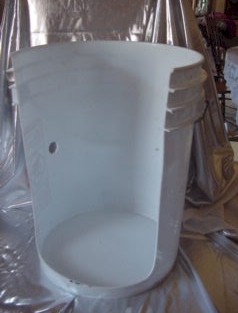
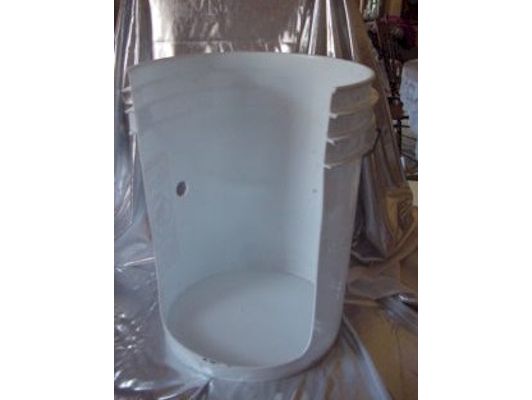
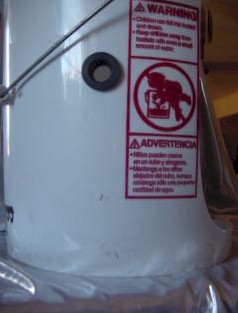
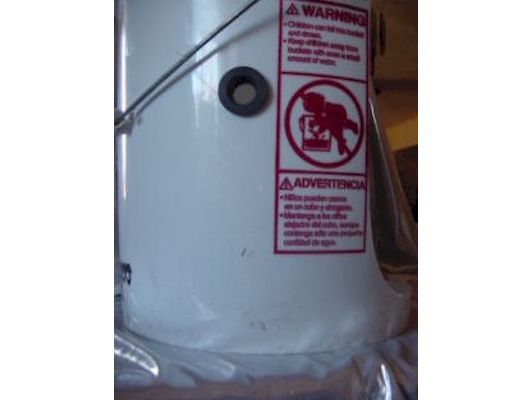
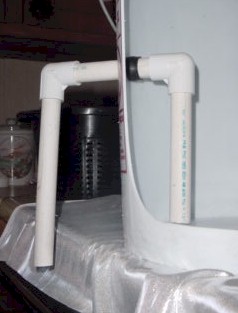
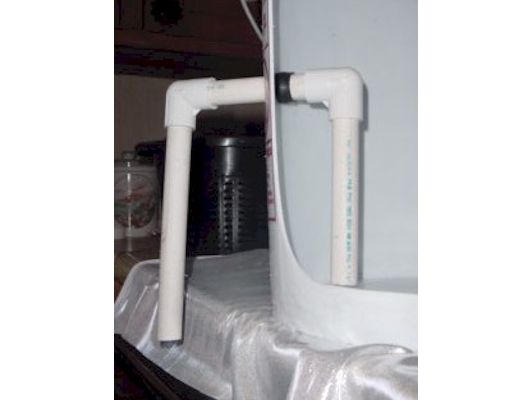
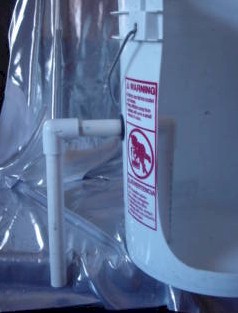
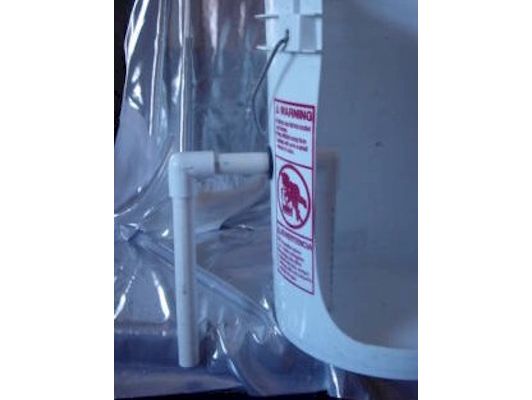
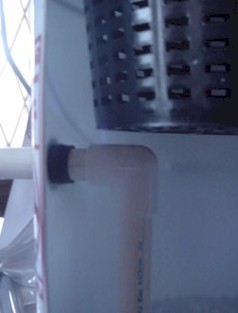
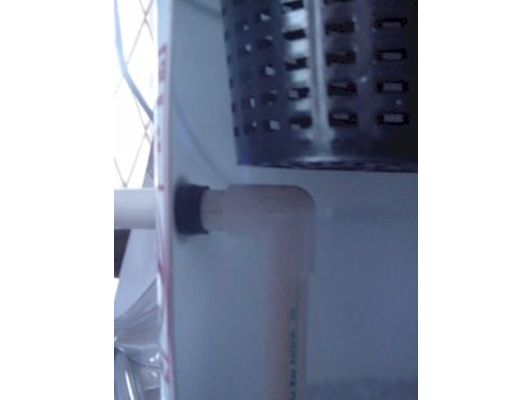
.jpg)
